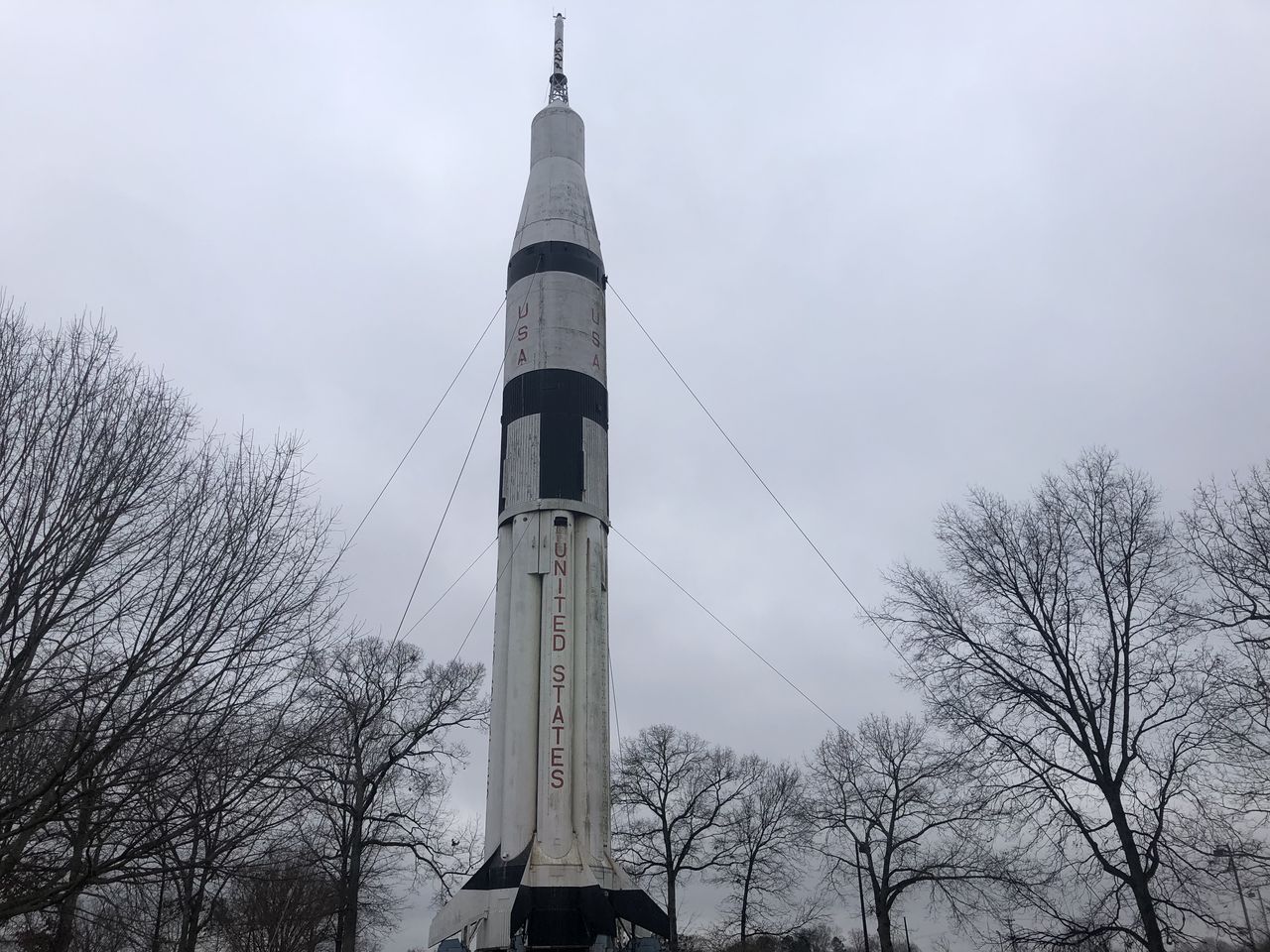Is restoring Alabama welcome center rocket a feasible option?
As momentum appears to build about replacing the deteriorating Saturn 1B rocket with a replica at the north Alabama welcome center on Interstate 65, evidence is surfacing that restoring the rocket may be a feasible alternative.
An 2022 internal assessment of the rocket’s condition by the U.S. Space & Rocket Center, obtained by AL.com, includes cost estimates for restoration, including one company saying it could complete the job for $5 million, far short of the $7 million cost NASA has projected. And a conservator working with a Huntsville group seeking to preserve the rocket said he believes restoration could cost even less still.
Related: $10 million fundraiser proposed to save Alabama rest stop rocket; questions loom
Related: NASA updates plans for rocket at Alabama rest stop
Meanwhile, state Sen. Tom Butler, R-Madison, is sponsoring a bill in the current legislative session to replace the rocket with a replica. And the commission that operates the rocket center last year received almost $1 million from the state legislature to help fund “rocket removal.”
For the moment, the issue is in a holding pattern, however, as the rocket center – charged by NASA to take down the rocket – awaits an opinion from the Alabama attorney general’s office on whether the state’s 2017 memorial preservation law makes it illegal to dismantle the rocket.
NASA announced in January that the rocket would be removed from the temporarily-closed Alabama welcome center just south of the Tennessee state line. In the announcement, NASA said restoring the 168-foot rocket would cost “in excess of $7 million.”
A “rough order of magnitude” cost estimate from two bidders in the rocket center’s 2022 internal report, however, projected restoration costs at $5 million and $6.3 million.
Daniel Ponsford, a Georgia-based conservator who has worked on projects at Arlington National Cemetery in Washington and across the country, said he believed restoration costs could be as low as $4 million. Ponsford is working with a Huntsville group seeking to raise money to cover restoration costs.
“The rocket really is in overall good condition,” Ponsford told AL.com. He said he recently has viewed the rocket from the ground and has asked permission to do an internal inspection to confirm his perspective.
“I firmly believe (the rocket is in good condition) and so does a structural engineer friend of mine,” Ponsford said. “We’re both in total agreement that this rocket can sustain another 40 years with no problem.”
That’s counter, of course, to NASA’s view that the rocket may not even be able to withstand rehabilitation. The rocket has been at the welcome center since 1979 and has withered since then under the elements, NASA said.
“Extensive repairs, if possible, would need to be done on site and require a team of experts working fulltime for more than a year,” NASA said in a statement announcing plans to remove the rocket. “None of these efforts will prevent the inevitable deterioration of a vehicle that was not designed to stand outdoors.”
The rocket center’s assessment of the rocket cited the buildup on the interior of bird and bat excrement as well as the “degradation” of the “spider beam.” That beam, the report said, “is responsible for the structural integrity of the entire rocket as it holds the 8 tubes together and holds the second stage to the first.”
As for the exterior of the rocket, it “shows many areas of corrosion, rusting, and deterioration caused by long term exposure to the elements. Restoration will heavily consist of corrosion control and metal repairs,” the report said.
All areas of the rocket must be sealed to prevent future wildlife intrusion, the report said.
Ponsford said none of those issues presented concern. This week, he said he has been in California working on restoration of military airplanes on display and said that the fuselage of those planes and the rocket were similar in their construction and, subsequently, similar in their restoration.
“The only difference is the rocket has fins where the B-52 has wings,” Ponsford said. “Besides that, structurally, they’re manufactured the same way. The rocket, though, is really overly built in comparison to the planes. So when we heard about the rocket being assessed that it could not be restored or it could for a phenomenal price, I looked at that dollar figure and thought that was way off base.”
Marshall Space Flight Center has also raised concerns about the safety of the rocket. But the Space & Rocket Center’s internal report made no mention of possible dangers associated with the rocket. The report said the guy wires that help secure the rocket appeared to be in good shape.
Ponsford also said the bird and bat excrement mentioned in the report would be “surface corrosion” and could be eliminated after pressure washing using lasers.
“We restored the New York Peace Monument on Lookout Mountain (at Point Park in Chattanooga), we laser-cleaned that,” he said. “And that’s (95) feet in the air. When we’re doing an aircraft and we clean out bird nesting material or guano, it’s truly superficial. There’s not enough acidic material there to really deteriorate the aluminum.”
The restoration estimates included in the rocket center report, as well as NASA’s estimate, include laying the rocket down and raising it back up again. Ponsford said the rocket could be restored as it stands.
“I believe it would cause more damage by trying to take it down and then restore it on the ground and then put it back up,” he said. “There’s just not a need for that.”
Ponsford said he is making his assessments without visually reviewing the interior of the rocket. But he was “pessimistic” that he would receive permission to do an inspection because of the momentum toward replacing it.
“If they allow us to go inside and take pictures, we would basically reconfirm our own assessment,” Ponsford said.
